I would like to have three plots in a single figure. The figure should have a subplot layout of two by two, where the first plot should occupy the first two subplot cells (i.e. the whole first row of plot cells) and the other plots should be positioned underneath the first one in cells 3 and 4.
I know that MATLAB allows this by using the subplot command like so:
subplot(2,2,[1,2]) % the plot will span subplots 1 and 2
Is it also possible in pyplot to have a single axes occupy more than one subplot?
The docstring of pyplot.subplot doesn't talk about it.
Anyone got an easy solution?






